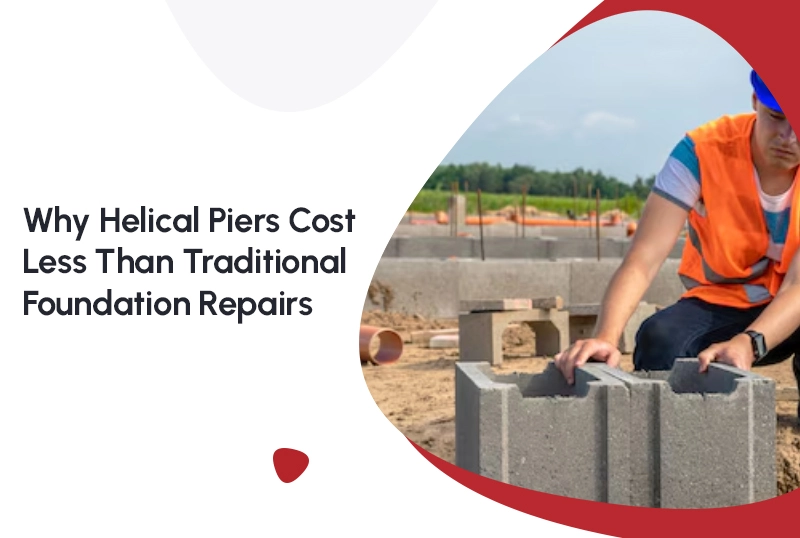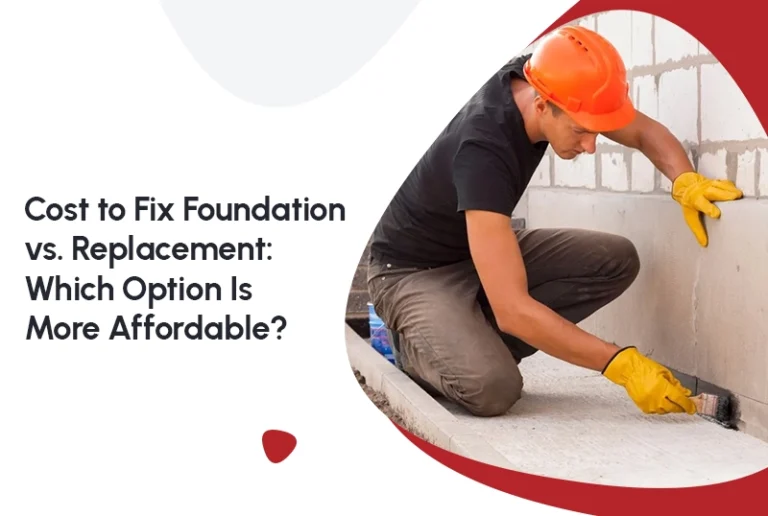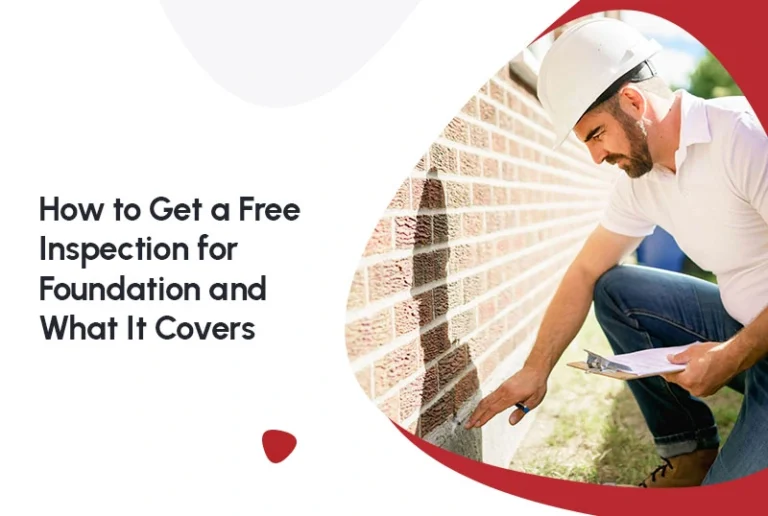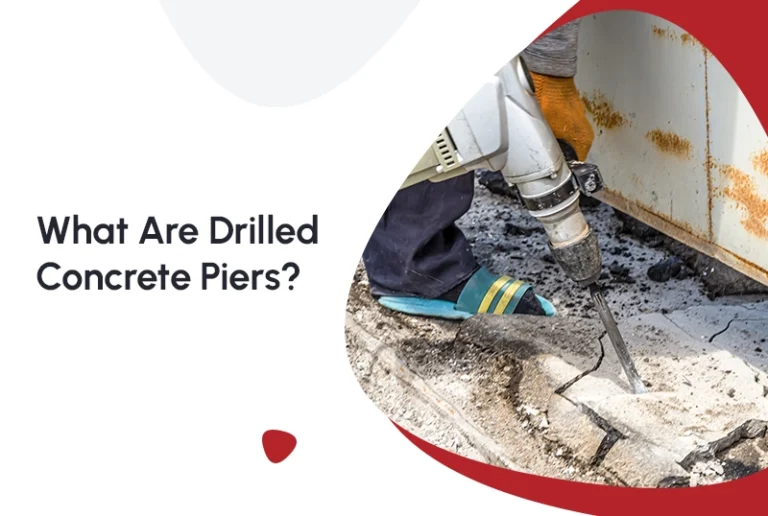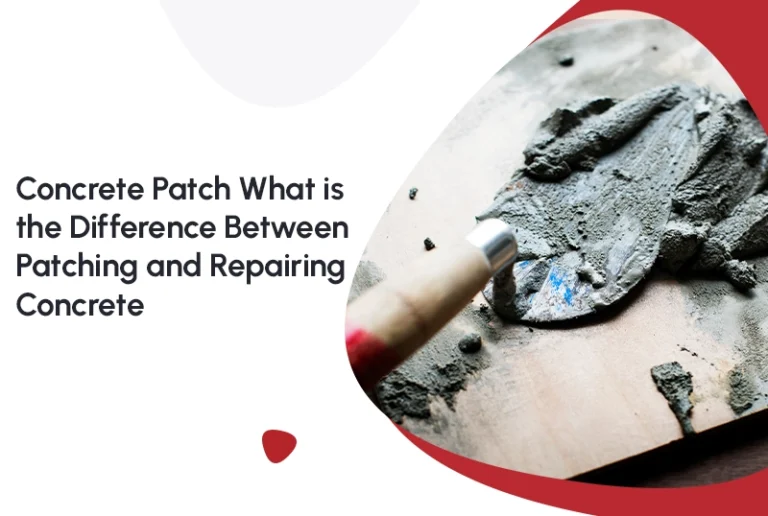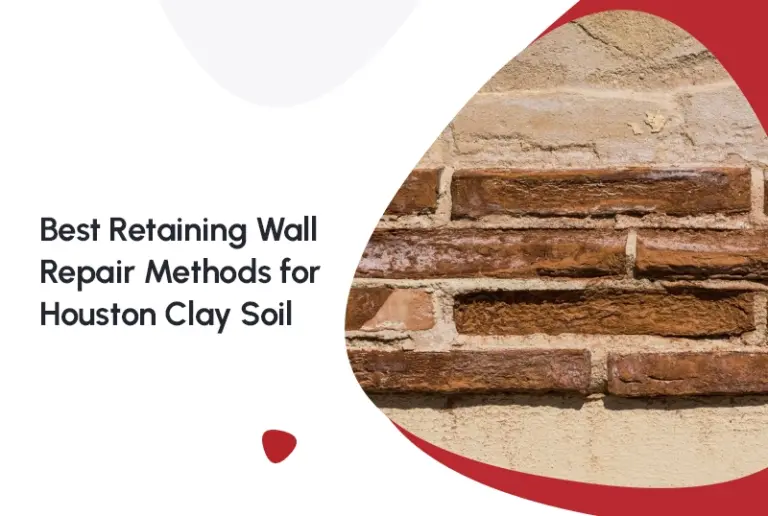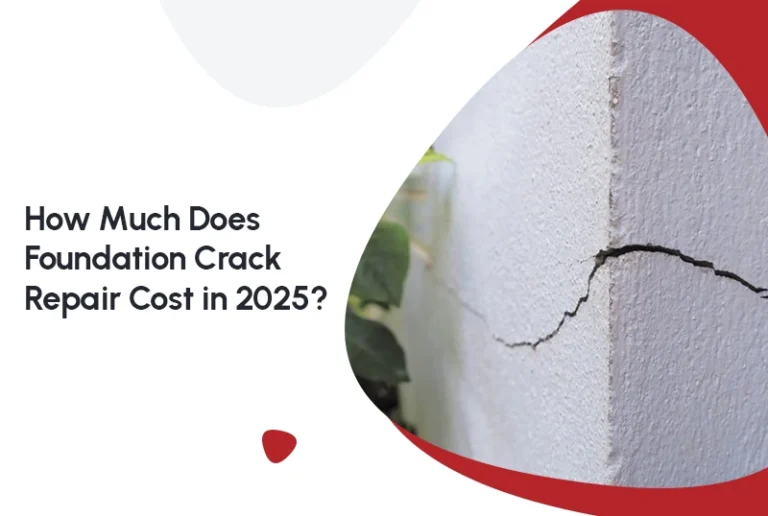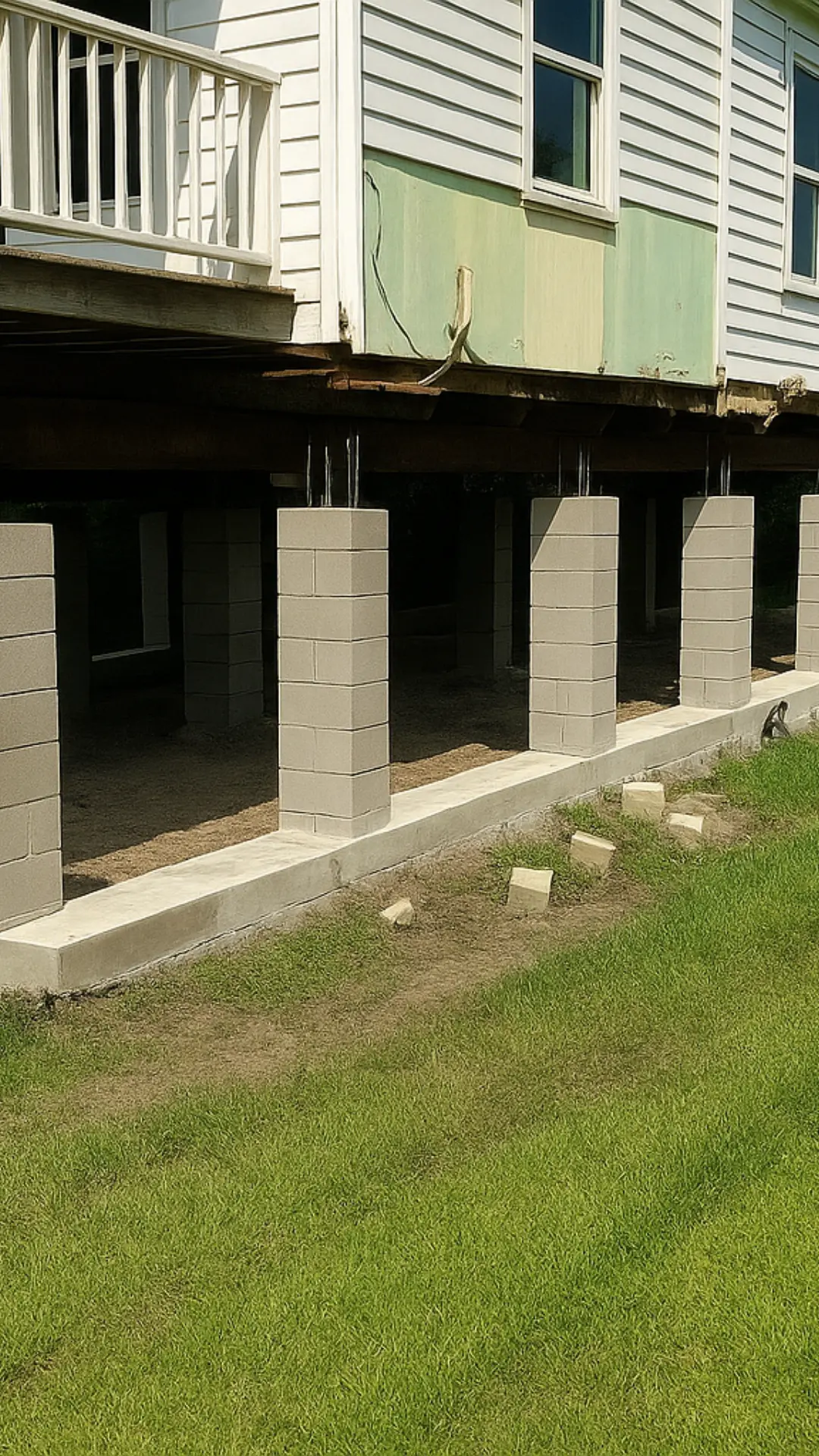If you’ve ever had foundation problems, you know the stress that comes with it. Cracks in walls, uneven floors, or doors that don’t close right—sound familiar? These could be signs that your foundation needs attention. When the time comes to fix it, homeowners are often left with two choices: traditional foundation repairs or the more modern option of helical piers.
But here’s the kicker: helical piers cost less than traditional foundation repairs, and they’re often a more efficient solution. In this blog, we’re going to break down why that’s the case and show you how helical piers can be a cost-effective, hassle-free solution for your foundation woes. Let’s dive in!
What Are Helical Piers?
Before we dive into costs, let’s take a quick look at what helical piers are. These piers are steel shafts with helix-shaped blades that are “screwed” into the ground to provide a solid foundation for your home. They’re used in foundation repair, new construction, and to stabilize buildings suffering from soil movement.
Think of them as giant screws for your foundation. Once they’re installed, they help distribute weight evenly, stabilize your structure, and prevent future settling. They’re an excellent solution for homes built on weak or shifting soils, such as expansive clay or sandy ground.
Why Helical Piers Cost Less Than Traditional Foundation Repairs
So why do helical piers cost less than traditional foundation repairs? There are several factors at play:
1. Faster Installation Time
Installing helical piers is a quick process compared to traditional methods like slab jacking or pier and beam foundation repairs. Traditional repairs can require days of excavation, concrete pouring, and drying time.
Helical piers, on the other hand, can be installed in a fraction of the time—often in a matter of hours, depending on the size of the job. Fewer man-hours mean lower labor costs, which directly translates into helical piers cost savings for homeowners.
2. Minimal Disruption to Your Property
One of the major reasons traditional repairs can be so expensive is the disruption they cause. To level your foundation or repair structural issues, contractors may have to dig up large portions of your yard, remove landscaping, or even tear up floors inside your home. This creates additional labor and material costs for things like replacing floors, patching up landscaping, and fixing any water damage.
Helical piers cost, on the other hand, require minimal excavation. The process doesn’t disturb your landscaping, interior floors, or daily life. It’s a less invasive solution that cuts down on additional repair costs making it a much cheaper alternative.
3. No Need for Concrete
Traditional foundation repairs, like pier and beam foundation systems or slab jacking, often rely on concrete to restore stability. Concrete can be expensive, especially when you factor in the costs of mixing, pouring, and curing. And if it’s not installed properly, slab cracks can appear again.
With helical piers, concrete slab foundation repair isn’t necessary. The steel piers are installed directly into the ground to support the foundation. This eliminates the need for additional materials, such as concrete, gravel, and wood, which can drive up the cost of traditional repairs.
4. Fewer Permits and Less Cleanup
In some cases, traditional repairs require multiple permits for large-scale excavation or structural changes. Plus, after repairs are done, contractors may have to remove debris and restore landscaping or flooring, which adds to the overall expense.
Since helical piers are less invasive and require minimal excavation, they often require fewer permits and much less cleanup. This reduces both the time and helical piers cost associated with foundation repairs.
How Much Do Helical Piers Cost?
Now that you know why helical piers cost less, let’s talk numbers. The average helical piers cost generally ranges from $1,000 to $2,500 per pier, depending on the depth and size of the job. For a typical home foundation, you may need anywhere from 6 to 20 piers. So, for a standard foundation repair, the total cost can range from $6,000 to $50,000.
This price tag might sound high, but when you compare it to traditional foundation repairs, it’s usually more affordable. For example, slab jacking can cost around $500 to $1,500 per hole, and pier and beam foundation repairs can run into the tens of thousands of dollars.
Factors That Affect the Helical Piers Cost:
- Soil Conditions: Softer or loose soil requires deeper installation, which can increase costs.
- Size of the Foundation: Larger homes with more settling issues will need more piers.
- Labor Rates: Costs vary based on where you live and the local labor market.
- Additional Repairs: If your home has significant settling, additional work may be required to stabilize the foundation, increasing costs.
Benefits of Helical Piers Beyond Cost
While the helical piers cost is a huge benefit, the system also offers other advantages that make it an appealing choice for homeowners:
1. Quick Installation
Because the installation process is fast, helical piers allow for quick fixes without interrupting your daily life.
2. Long-Term Solution
Helical piers are a permanent solution to foundation issues. They’re made of steel, so they won’t corrode or degrade over time, unlike some traditional methods that can deteriorate.
3. Environmentally Friendly
Unlike traditional methods, which often require heavy equipment and large amounts of concrete, helical piers have a much smaller environmental footprint. They require minimal excavation and are made from recyclable materials, making them a more sustainable option for foundation repair.
Final Thoughts: Should You Choose Helical Piers?
If you’re dealing with foundation issues, helical piers offer a cost-effective, fast, and durable solution. They’re quicker to install, require minimal disruption, and often cost less than traditional repairs, especially when considering the long-term benefits.
So, the next time you find yourself wondering about foundation repair options, remember: helical piers cost less, last longer, and get the job done faster than traditional methods.
For a professional consultation and expert installation, contact FNF Foundation. We’ll assess your foundation needs, provide a fair estimate, and ensure your home is stable and secure for years to come!
FAQs About Helical Piers and Foundation Repair
1. What are helical piers, and how do they work?
Helical piers are steel shafts with helix-shaped blades that are screwed into the ground to stabilize foundations. They provide a strong, durable base for your home without the need for heavy excavation.
2. How long do helical piers last?
When installed properly, helical piers can last for decades, offering a long-term solution to foundation problems.
3. Are helical piers suitable for all types of soil?
Yes! Helical piers work well in most soil types, including expansive clay and sandy soil, as they can be driven deep enough to anchor into solid ground.
4. Can I install helical piers myself?
While it’s tempting to DIY, it’s best to leave the installation to professionals. Proper installation is critical to ensure the piers function effectively and provide the required support.
5. What’s the cost difference between helical piers and traditional repairs?
Helical piers cost are often 30–50% cheaper than traditional methods like pier and beam foundations or slab jacking, especially when you factor in the speed of installation and lack of disruption.
According to the National Association of Home Builders (NAHB), the average cost of foundation repairs for residential properties has increased by 25% over the past decade. One of the main reasons? Homeowners are opting for more cost-effective and durable solutions like helical piers to avoid ongoing maintenance costs.
